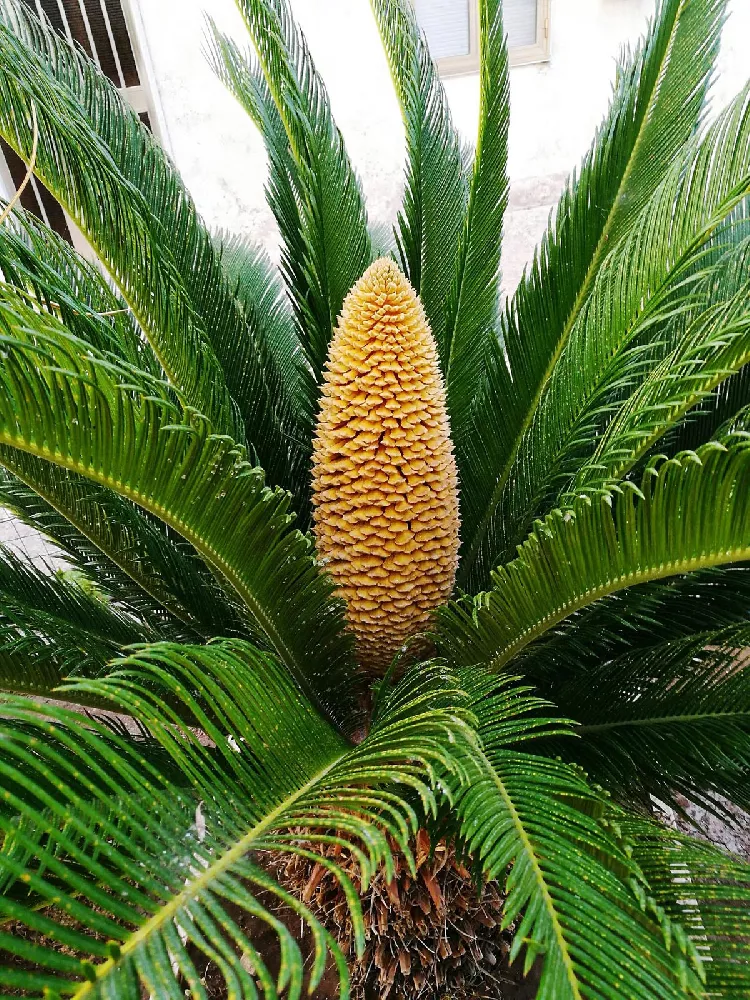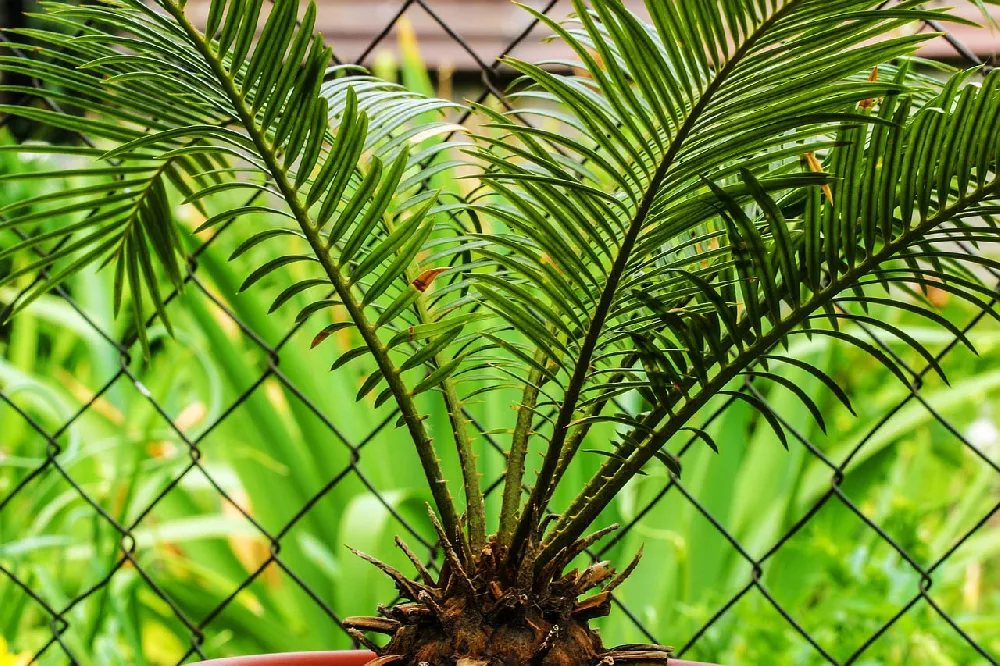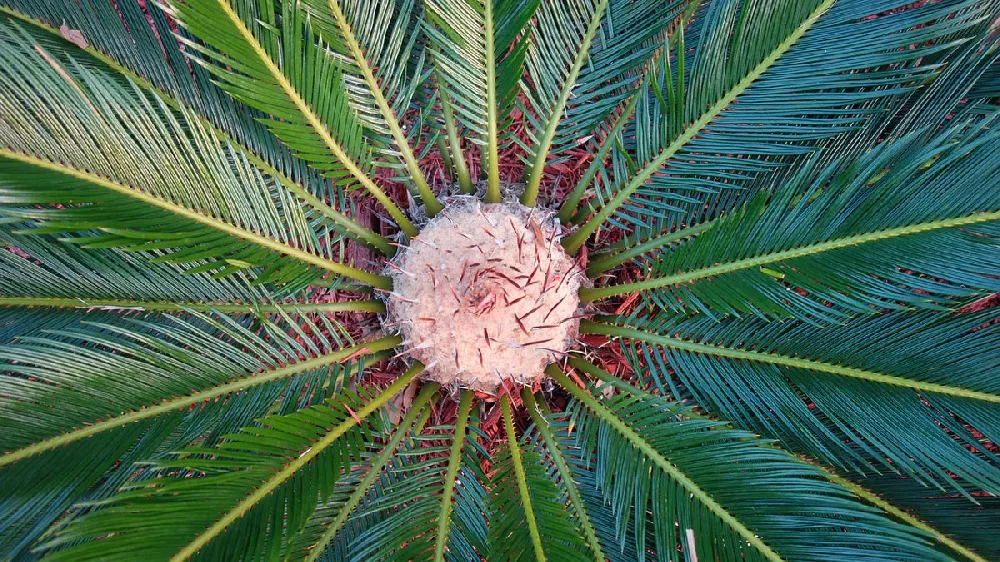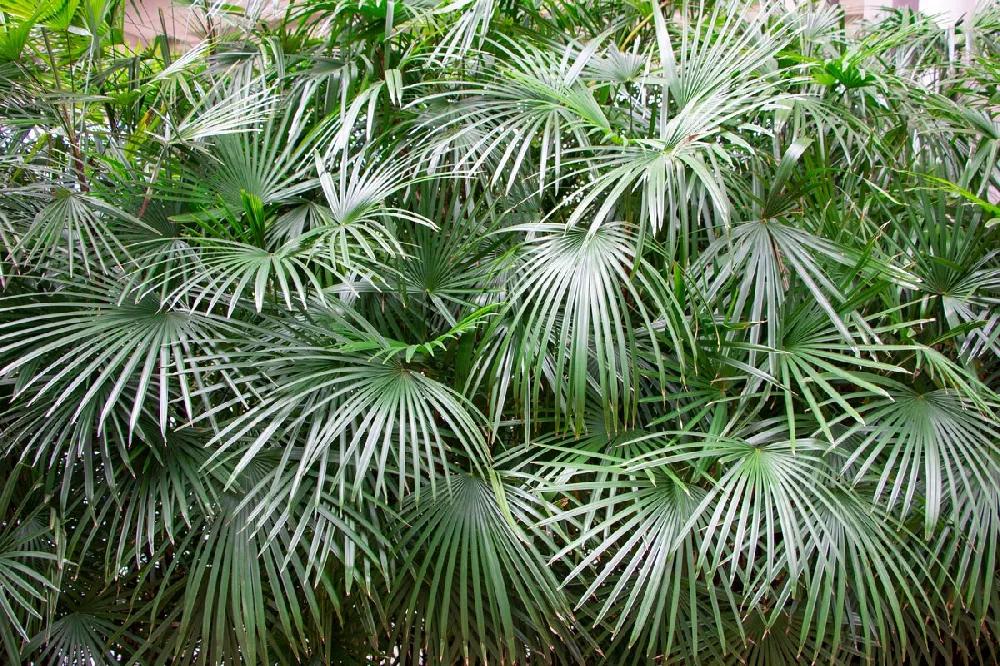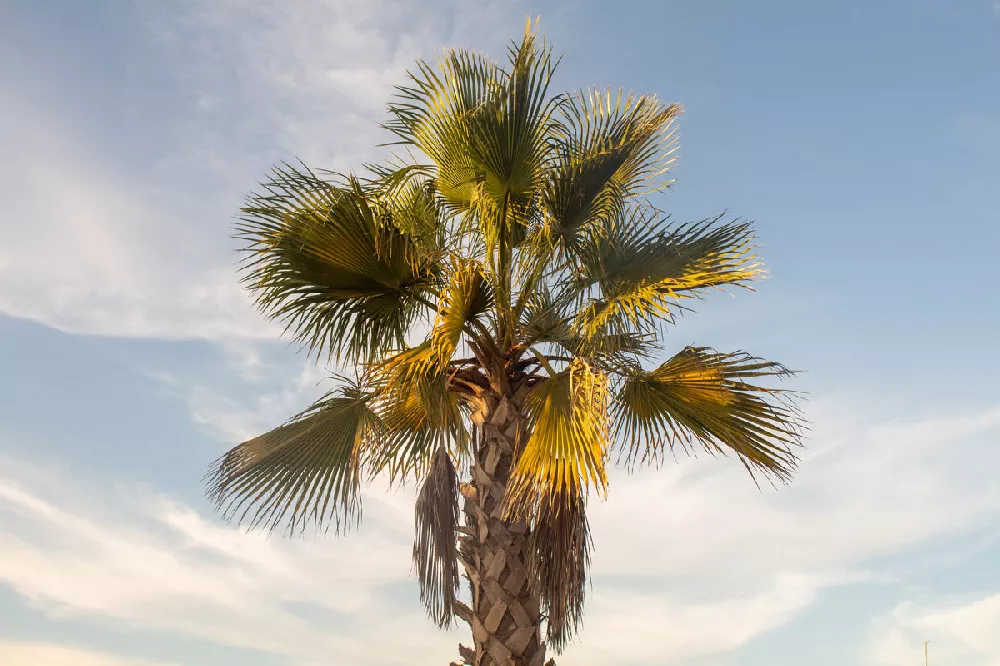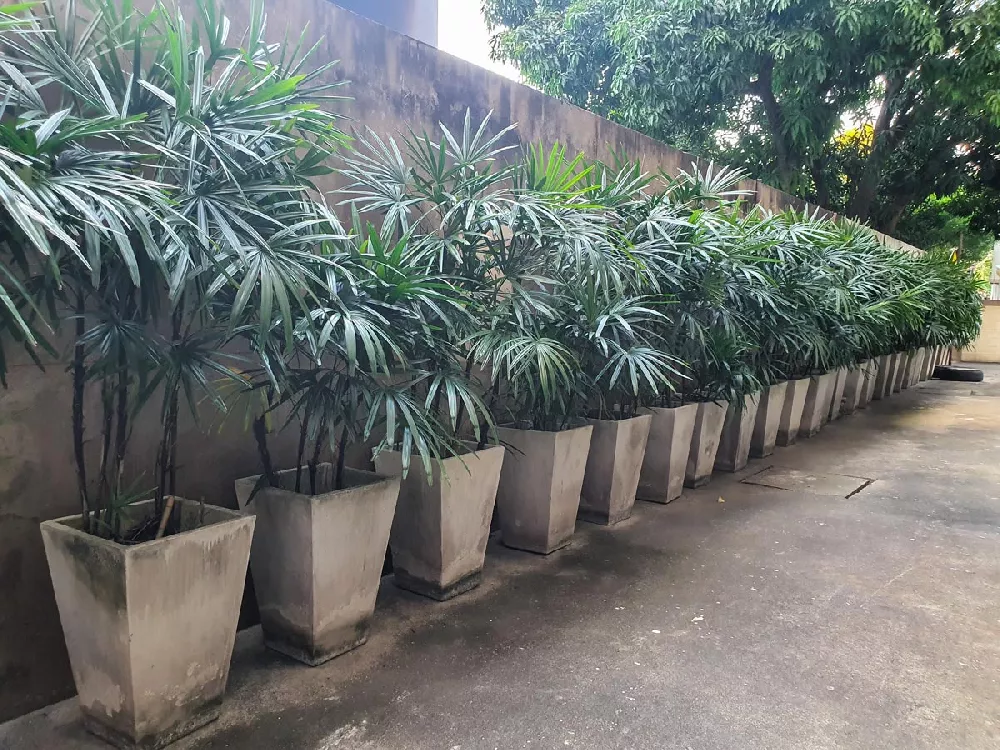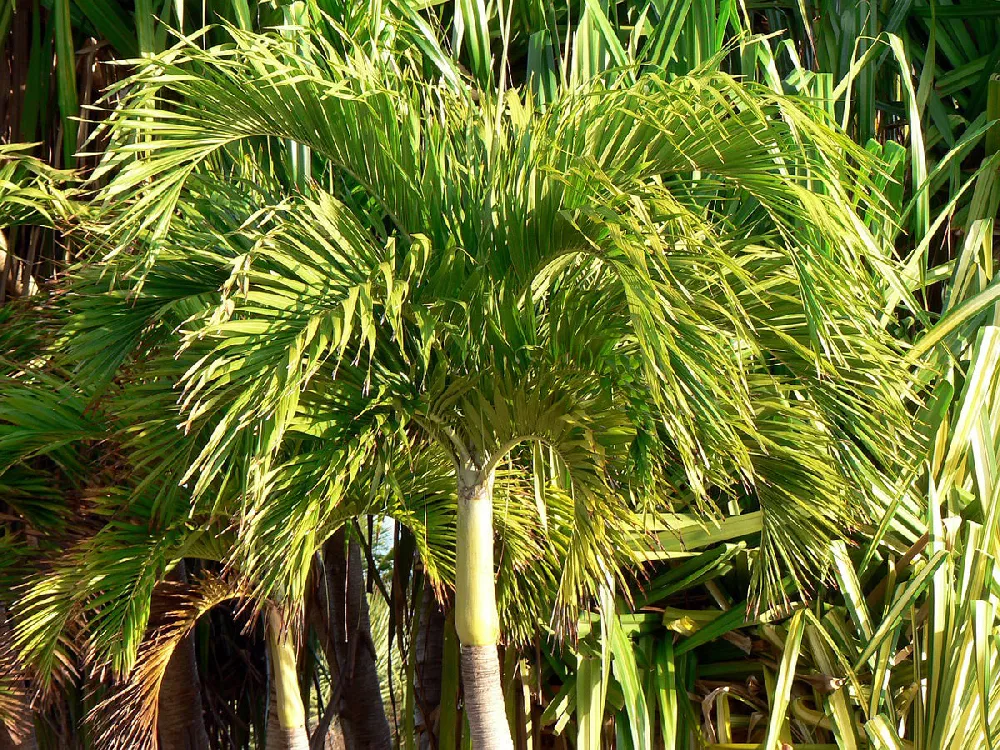- Home >
- Ornamental Plants >
- Sago Palm Tree
Sago Palm Tree for Sale - Buying & Growing Guide
Despite its name, the sago palm tree isn't a true palm — it's a cycad — Cycas revoluta, to be exact — a type of plant that dates back to the age of the dinosaurs. Perhaps because of this, it's a tough little tree that thrives on neglect and is a great choice for beginning gardeners or those who want an elegant focal point for their garden but don't want to fuss over it. Although not a tall tree — it maxes out at about 10 feet when grown outdoors — it does command attention, with long, graceful fronds and an attractively textured trunk. Here are a few more reasons to add this stately tree to your landscape:
- Sago palms are deer-, salt-, and drought-resistant.
- They Grow well in containers in northern climates.
- Sago palms have few disease or pest problems.
Enter your zip code to find nearby stores that may carry this plant.
Plant Care
Sunlight

Sago palms thrive in partial shade, and they need at least four hours of direct light a day.
Watering
Water regularly, but allow soil to dry out between waterings. Drought-tolerant once established.
Fertilizing

Fertilize your sago palm with a balanced, slow-release fertilizer, such as an 8-8-8, throughout the growing season.
Planting and Care
Planting instructions
If planting your sago palm outside, site it where it will receive roughly four hours of direct light a day, in soil that drains well. In hot climates in zones 10 to 11, it appreciates afternoon shade. Unpot your plant and tease out any encircling roots, which can girdle the tree and kill it. Dig a hole as deep as the root ball and twice as wide. Throw in a few handfuls of well-rotted manure or compost, and place the tree on top of it. Fill in around the root ball with good-quality topsoil. Water thoroughly. Mulch with an organic substance, such as bark chips, to conserve moisture.
Watering and nutrients
When newly planted, water your sago palm several times a week, stopping when the water starts pooling around the tree. Once you see robust new growth, you can cut back on supplemental watering to about once a week or whenever the soil has dried out around the root zone. Although they are drought-resistant, water your sago palm more often if you’re experiencing a heat wave or very dry weather. Fertilize with a balanced, all purpose fertilizer, such as an 8-8-8 formula, designed for landscape plants throughout the growing season, as indicated on the package directions.
Pollination
Sago palm trees are dioecious, meaning that the male and female reproductive organs are on different trees. If you have both male and female plants, you will see the male plants produce brown inflorescences, which fertilize nearby female plants via either wind or insects. Female plants then produce clusters of red fruits.
Pruning
Pruning a sago palm tree couldn’t be easier. Your main task is to trim out older leaves as they begin to turn brown and dry out. These will be the lowest fronds on the trunk, and cutting them back to the trunk slowly builds on the appealing textured look of the bark. You should also monitor your tree for any other dead, diseased, or broken branches and trim them out when you see them.
Pests and diseases
Insects that may appear on your sago palm include common pests such as scale insects and mealybugs. If you find fuzzy white mealybugs on your plant, you may also find ants, as ants “farm” mealybugs for their excretions. A strong spray of water may clear out light infestations, and insecticidal soap can also be useful. Diseases of the sago palm include sago palm yellowing, which can be caused by a lack of manganese in the soil. A light application of manganese sulfate several times a year can alleviate it.
Achieving maximum results
If you live in the northern U.S., in USDA hardiness zones 7 and below, you may think that the tropical sago palm will not work for your landscape. You’d be wrong, though: Sago Palms grow beautifully in containers, and are nearly as easy to care for there as they are when planted outside. A sago palm in an ornamental container can be a spectacular focal point on a patio or next to a front entrance. To plant your sago palm in a container, choose one that is roughly 2 to 4 inches larger all around than the root ball. Use a good quality potting mix, and keep the soil moist, especially when you bring it indoors to a dry house in the winter. When indoors, use a damp cloth every few weeks to wipe down the leaves, which will keep them dust-free and help avoid insects.
FAQs
Are sago palm trees toxic?
Yes, all parts of the sago palm are toxic if they are consumed by humans or animals. Few pets will chew on the prickly leaves, but the seeds may be attractive to dogs or small children. Eating them causes severe gastrointestinal upset and can damage the liver. It's best to keep the plant in a spot where it can't be reached by your companion animals or inquisitive small children.
How far apart should I space my sago palms?
Sago palms are not big trees, and when grown outside, they will only reach about 10 feet at maximum. Container-grown palms, meanwhile, max out at 3 to 5 feet. If you are planting multiple sago palms outside, leave about 10 feet between each one, since they can grow as wide as they are tall.
How fast do sago palms grow?
Sago Palm Trees are slow growers, and a tree planted outside may take up to 50 years to reach a height of 10 feet. On the other hand, they are quite long-lived, lasting up to 100 years of age or older, so they can provide interest in the garden for multiple generations of gardeners.
Compare Similar Products
Customer Reviews
 Delivered perfect
Delivered perfectThe palm tree came in very good shape, I was able to quickly plant it with no problems and has been holding up pretty good so far
 Happy
HappyIt was a little smaller than I expected and slightly damaged but overall I am happy with the purchase
You can't add more Product Name - Product size to the cart.
OK